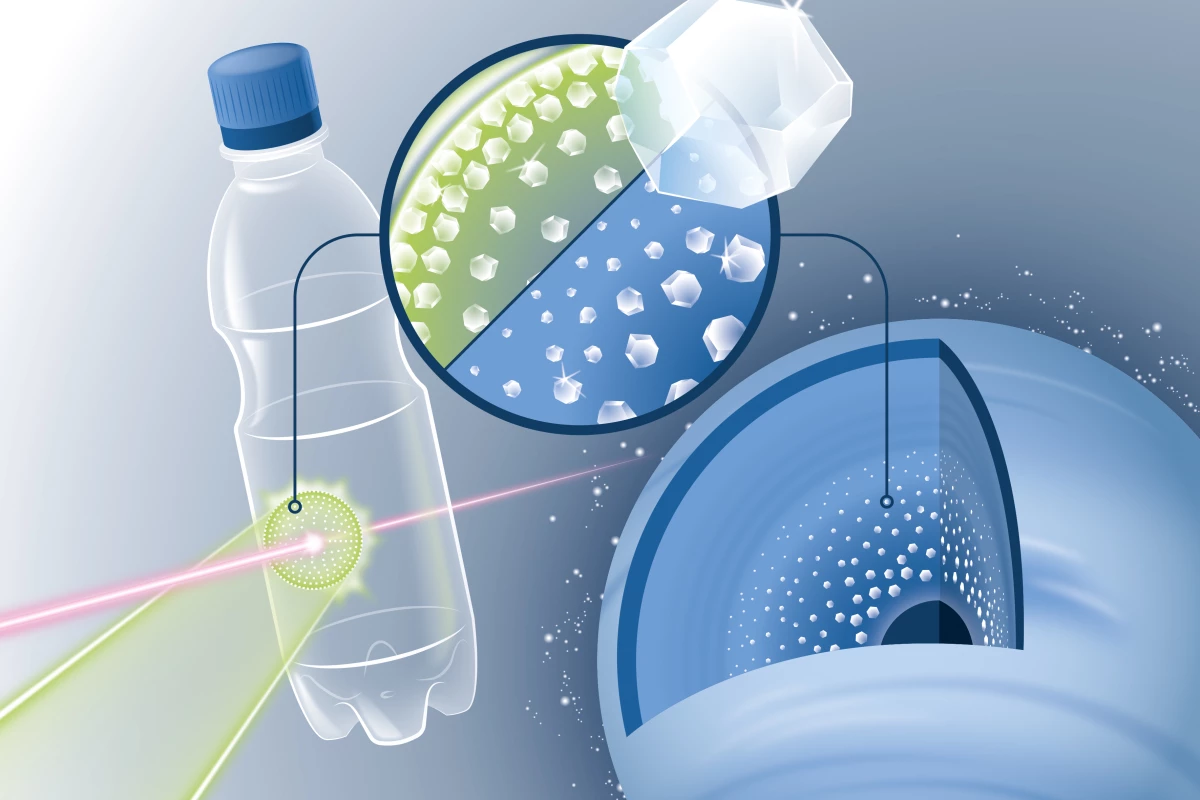Scientists have turned plastic into diamonds. Using high-powered lasers, the team zapped samples of PET, the common material used in plastic bottles, to produce intense heat and pressure to form tiny diamonds that may naturally rain down on planets like Uranus and Neptune.
Here on Earth, diamonds are prized for their rarity (even if that may be changing), but on other planets they may be seem as common as rocks. On ice giants like Uranus and Neptune, it’s thought that the extreme pressure would compress elements like hydrogen and carbon to form solid diamonds that then fall through the atmosphere like rain.
This phenomenon hasn’t been directly detected, but in 2017 a team of scientists reported that they had recreated the process in the lab. They did so by firing the world’s most powerful X-ray laser, the Linac Coherent Light Source (LCLS), at samples of hydrocarbon materials. This instantly heated them to temperatures of up to 6,000 °C (10,800 °F) and generated powerful shock waves of a few million atmospheres of pressure, forming tiny “nanodiamonds.”
Although the experiments showed it was technically possible, the team says that the original hydrocarbon materials, like polystyrene, didn’t accurately simulate elements present in the interiors of these ice giants. Oxygen is also present in large amounts, so the researchers investigated other materials that could introduce this key element to the mix.
They settled on PET, a form of plastic commonly used in food and drink packaging, which has a good balance between carbon, hydrogen and oxygen. The team repeated the experiment, zapping thin-film PET samples with the LCLS and then using two different imaging techniques to check not just whether nanodiamonds formed, but how quickly and how large they grew. And sure enough, they detected diamond densities of up to 3.87 grams per cubic cm.
“The effect of the oxygen was to accelerate the splitting of the carbon and hydrogen and thus encourage the formation of nanodiamonds,” said Dominik Kraus, an author of the study. “It meant the carbon atoms could combine more easily and form diamonds.”
Not only does this study lend weight to the hypothesis of diamond rain on ice giant planets, but the team says it also demonstrates a new potential manufacturing technique for these tiny diamonds, which are used in industrial abrasives, polishing agents, and maybe one day, highly-sensitive quantum sensors.
The research was published in the journal Science Advances.
Source: HZDR




